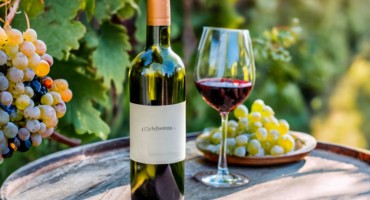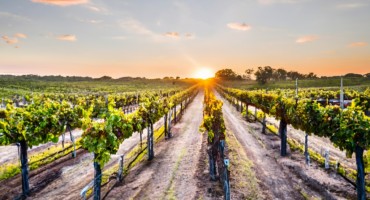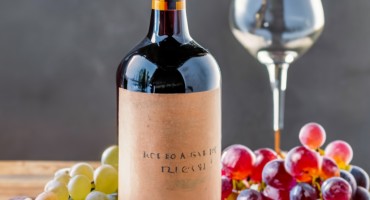Crafting Excellence: How to Make Wine from Grapes in the Hamptons

Have you ever been curious about the process of making wines? In this article, we explore the art of winemaking, covering each stage from grape gathering to bottling.
Winemaking boasts a rich history spanning millennia and is a largely natural process that requires minimal human intervention. Each winemaker brings their own unique approach to the process, contributing to the delightful diversity that makes wines so captivating.
While winemaking encompasses various methods and nuances, it essentially involves fundamental steps.
The Grape Harvesting Process
The initial stage of winemaking involves the gathering or harvesting of grapes. Grapes reliably provide the necessary sugar content each year, crucial for alcohol production that preserves the wine. Additionally, the presence of tannins, esters, and acids in grapes contributes to the desired uniformity.
Timing is crucial for grape harvesting, ideally aligning with their physiological ripeness. Contemporary winemakers blend scientific methods with age-old tasting techniques to pinpoint the optimal grape-picking moment. Often, external experts, vineyard managers, and proprietors collaborate to make this decision.
The collection of grapes can be mechanized or carried out manually. Although machines are available, many wineries prefer manual harvesting due to concerns about potential damage from mechanical harvesters on grapes, vines, and soil.
Destemming Step
This step involves the separation of grapes from the grape cluster. The main purpose of separating grapes from stems and leaves is to avoid adding bitter flavors and aromas to the wine during maceration.
Stems are often used in red wine pressing, but for white wines, their role in enhancing must extraction can lead to varied recommendations. Eliminating the stems helps avoid astringent compounds and the herbal notes they contribute to the wine fermenting must. Often, this de-stemming process is accompanied by gentle pressing.
Crushing Process
Next in the winemaking process is crushing, now done with mechanical presses. For centuries, humans engaged in the vintage dance within barrels or stomped on grapes to transform them into must.
Advancements in hygiene and mechanical crushing have improved wine quality and lifespan. It's worth noting that not all grapes commence their transition to wine at this stage.
Certain winemakers initiate fermentation with intact grape clusters before subjecting them to crushing, allowing natural grape pressure to rupture the skins before they reach the press. The winemaking process remains uniform for red and white wines until the crushing phase.
For white wine production, the must is promptly pressed following crushing, segregating the juice from skin, seeds, and solids. This separation prevents color and tannins from permeating the white wine. In contrast, red wine mingles with its skins, extracting color, flavor, and tannins.
<
Copigmentation index (%) of the oenological tannins and (-)-epicatechin at 1, 7, 14 and 21 days.
The copigmentation index refers to a measure of the interaction between color compounds in wine, particularly anthocyanins and other phenolic compounds. In simpler terms, it quantifies how different compounds influence the color of the wine when they interact. Commercial tannins are additives used in winemaking to influence various aspects of the wine, including its color, flavor, and structure.
Once the grapes are crushed and pressed, the must undergo a resting period, and fermentation commences within a span of 6 to 12 hours. While some wineries embrace this spontaneous fermentation, others intervene by replacing wild yeasts with more predictable strains, yielding controlled outcomes.
Wine Fermentation
Once fermentation begins, it typically persists until all the sugar is transformed into alcohol, resulting in a dry wine. This phase can span from ten days to as long as a month. Alcohol content can vary among wines, contingent upon the initial must's sugar concentration.
Wines crafted in colder climates typically yield an alcohol content of around 10%, while those from warmer regions might reach up to 15%. Conversely, in the creation of sweet wines, fermentation is halted to retain a portion of the sugar, ensuring a less dry profile.
Malolactic Fermentation
The wine resulting from the preceding stages undergoes another round of fermentation. This process serves to reduce the acidic taste, rendering wines more palatable. The conversion of grapes into alcohol during the fermentation process results in changes to wine acidity, leading to naturally varying levels of acids.
Most wines fall between 2.5 to 4.5 on the pH scale.
Aging constitutes a paramount phase in winemaking. During this period, the wine is placed in barrels, absorbing aromatic nuances that become discernible during tastings. While maturing in the barrels, the wine evolves, manifesting distinct attributes.
Clarification Stage
Following the completion of fermentation, the winemaking process moves into the clarification stage. At this stage, winemakers can opt to transfer their wines from one container to another, using methods like racking or siphoning. The goal is to separate sediment and solids, referred to as pomace, and leave them at the bottom of the fermentation tank.
Filtration and fining processes are applicable at this stage. Filtration methods range from using coarse filters that capture larger solids to employing sterile filter pads that remove all microorganisms from the wine. Fining involves the addition of substances to the wine to enhance its clarity.
Commonly, winemakers introduce elements like egg whites or clay that aid in settling dead yeast cells and other solids to the bottom of the wine. These compounds bind to unwanted particles, facilitating their separation from the liquid. Once clarified, the wine is transferred to another container, where it is prepared for bottling or further maturation.
Bottling Wine
Ultimately, the wine is either bottled right away or left to mature. Wine maturation can take place within bottles, stainless steel or ceramic tanks, and sizeable wooden barrels. This final phase offers myriad choices for the winemaker, profoundly influencing the end product.
The choice of container significantly shapes the wine's flavor, aroma, and quality during maturation. Different containers impart distinct attributes as the wine ages, affecting its final profile and aging potential.
Winemakers carefully transfer the wine from barrels to bottles, sealing them with corks or caps. Resting in the bottle allows the wine to integrate and evolve, revealing its true potential over time.
Cheers!
As the culmination of the intricate winemaking journey, the enjoyment of the wine by consumers is a moment of pure delight. For wine enthusiasts both in the Hamptons and beyond, this is a chance to intimately connect with the results of the winemaker's dedicated efforts. With each sip, they explore a sensory journey, experiencing the diverse flavors and unique qualities crafted by terroir and skill. This experience encapsulates not just a taste, but a deep appreciation for the artistry and passion that transforms grapes into a harmonious symphony of aromas and tastes.
Winery Visits and Experiences
In addition to producing exceptional wines, Hampton's wineries are also offering immersive experiences for visitors. Guided vineyard tours, barrel tastings, and blending sessions offer in-depth winemaking insights and enhance enthusiasts' personal connection with the wines. The beautiful Hamptons landscapes enhance these visits as guests walk among well-tended vines against rolling hills and coastal views. These experiential encounters not only educate visitors about the intricacies of winemaking but also create lasting memories and a sense of belonging to the Hamptons' winemaking legacy.
Wine production in the Hamptons is a labor-intensive and collaborative effort that brings together the expertise of viticulturists, winemakers, and other specialists. Through careful attention to each step of the process, the Hamptons continue to produce wines that reflect the region's distinctive terroir and contribute to its vibrant wine culture.
As you enjoy your next wine bottle, consider the stages that enhance your sensory journey.










